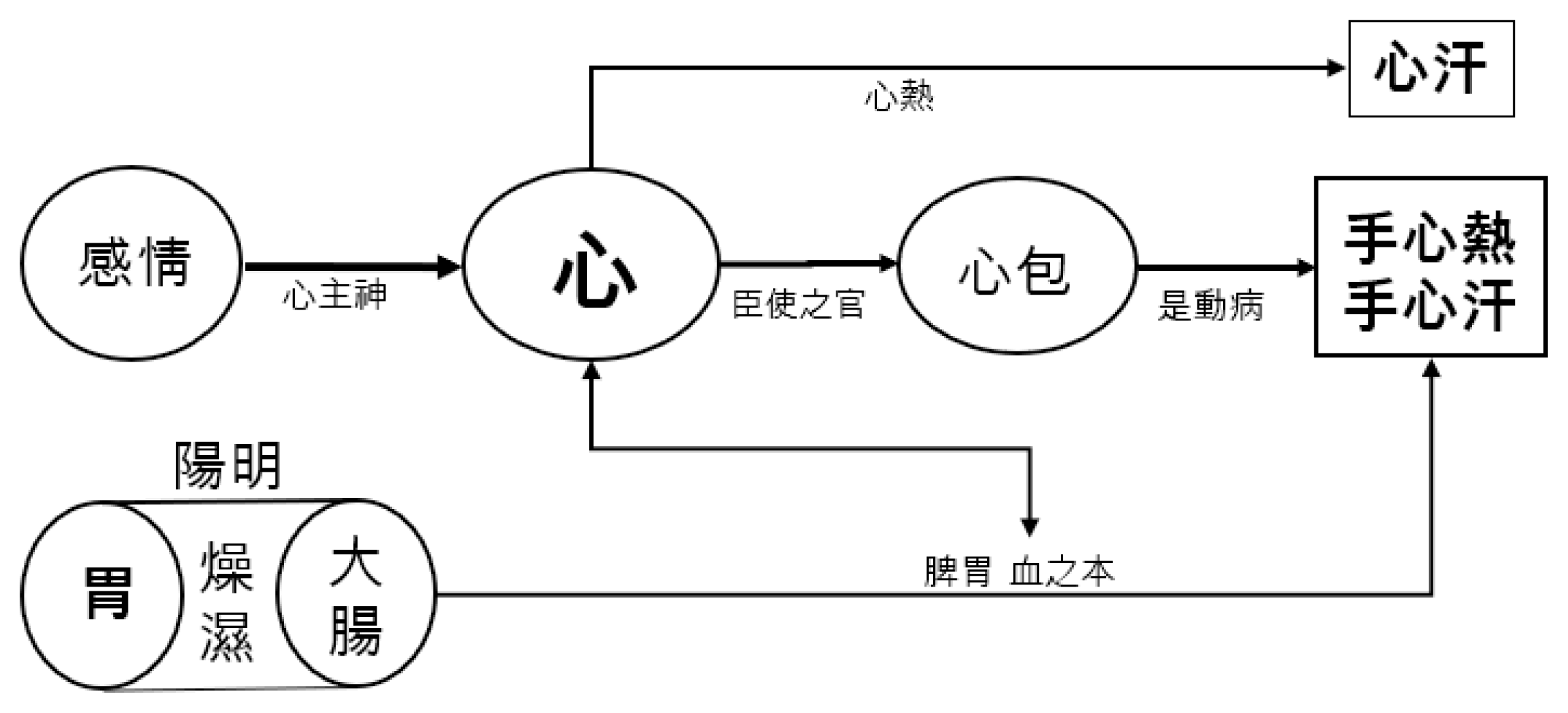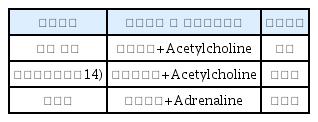Different Pathology between General and palms-and-soles hyperhidrosis in Korean Medicine and Medicine
Article information
Abstract
Objectives
We noticed that hyperhidrosis can be differentiated by whether it is topical or systemic in both Korean medicine(KM) and Modern medicine(MM). Comparing between topical and systemic sweating, we will figure out similarity between KM and MM about stimuli on sweat.
Methods
All research is done by finding information on text-book, article, books.
Results
Hyperhidrosis is differentiated by whether it is topical or systemic in both Korean medicine(KM) and Modern medicine(MM). First, systemic sweating(SS) is affected by body temperature. In KM, Heat and Cold(plus yang deficiency) can make human sweat systemically. In MM, heat is also mentioned as stimulus. Second, topical sweating(TS) can occur on emotionally-stressed situation especially on palms-and-soles. In KM, this phenomenon is explained by heart spirit(心神) and disease transmitted by pericardium meridian(手厥陰心包經 是動病). In MM, anatomically hyperhidrosis on palms-and-soles is generated by adrenergic sympathetic nerve which is involved with stress. Third, sweating on palms-and-soles also can be generated by internal organ. In KM, hyperhidrosis on palms-and-soles is explained as illness on stomach meridian(足陽明胃經). The 70% of parasympathetic nerve is vagus nerve which is located at internal organs-usually gastrointestinal tract. In that point, stomach and parasympathetic nerve seem to be involved in hyperhidrosis on palms-and-soles.
Conclusion
Hyperhidrosis is differentiated similarly by whether it is topical or systemic in both Korean medicine and Modern medicine. Conserving each perspective of KM and MM, one perspective can be useful to other by supplementing other’s weak point.

The possible route of 心汗 and 手足汗. 心, 胃陽明 is probably involved with 手心汗. 胃陽明 can interact with 心 by its position. 手心汗 is directly affected by 心包經 which is assisting 心. 心汗 is generated by 心虛熱.





